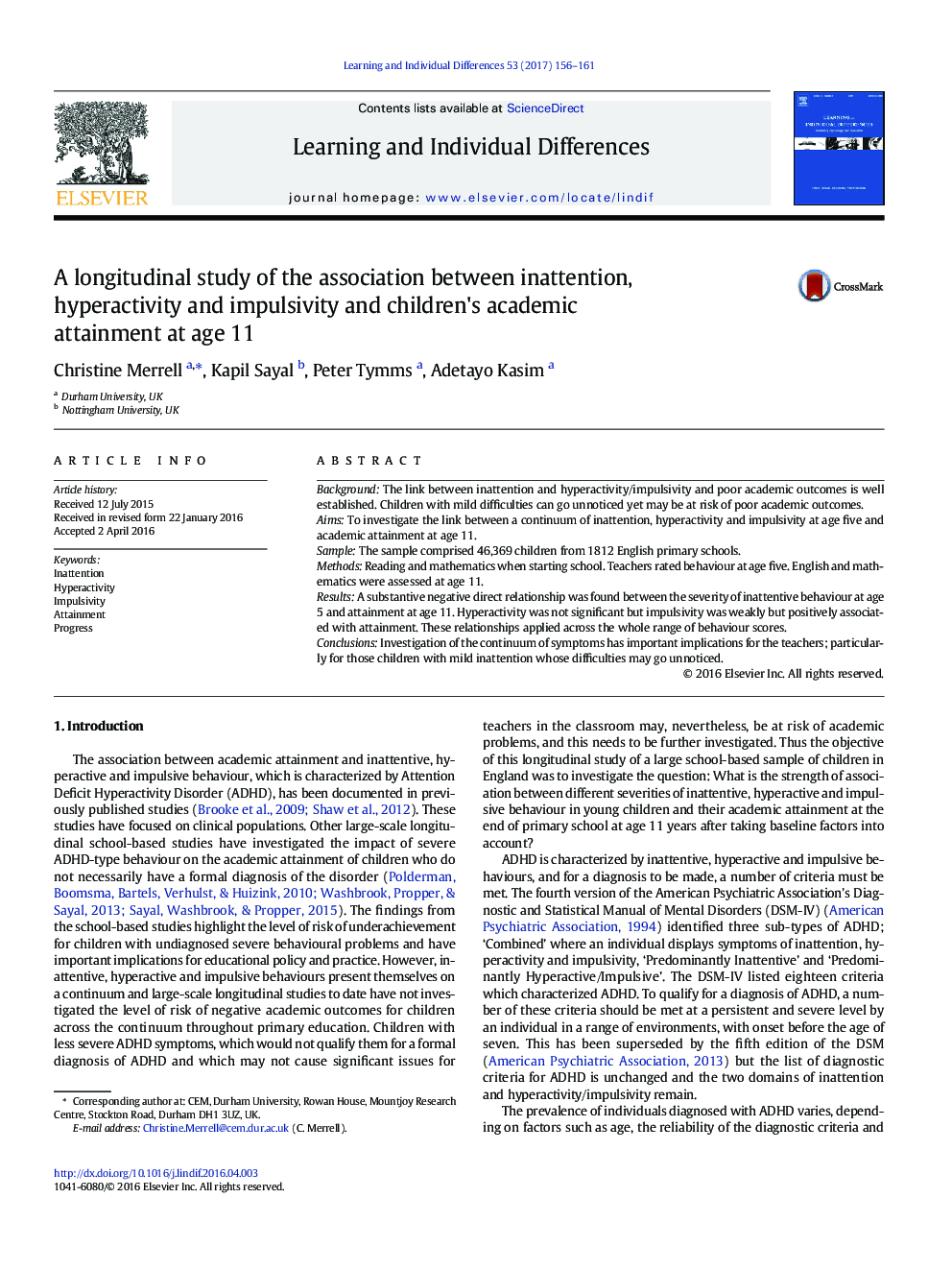| Article ID | Journal | Published Year | Pages | File Type |
|---|---|---|---|---|
| 4940189 | Learning and Individual Differences | 2017 | 6 Pages |
â¢Inattention at age 5 was substantively related to attainment at age 11.â¢Hyperactivity at age 5 was not significantly associated with later attainment.â¢Impulsivity at age 5 was weakly but positively correlated with later attainment.â¢These relationships held for children with mild, sub-clinical, levels of symptoms.
BackgroundThe link between inattention and hyperactivity/impulsivity and poor academic outcomes is well established. Children with mild difficulties can go unnoticed yet may be at risk of poor academic outcomes.AimsTo investigate the link between a continuum of inattention, hyperactivity and impulsivity at age five and academic attainment at age 11.SampleThe sample comprised 46,369 children from 1812 English primary schools.MethodsReading and mathematics when starting school. Teachers rated behaviour at age five. English and mathematics were assessed at age 11.ResultsA substantive negative direct relationship was found between the severity of inattentive behaviour at age 5 and attainment at age 11. Hyperactivity was not significant but impulsivity was weakly but positively associated with attainment. These relationships applied across the whole range of behaviour scores.ConclusionsInvestigation of the continuum of symptoms has important implications for the teachers; particularly for those children with mild inattention whose difficulties may go unnoticed.
Graphical abstractDownload high-res image (157KB)Download full-size image
